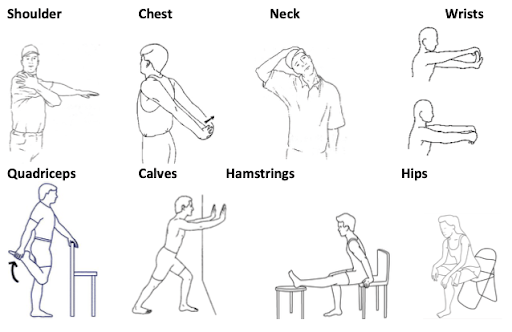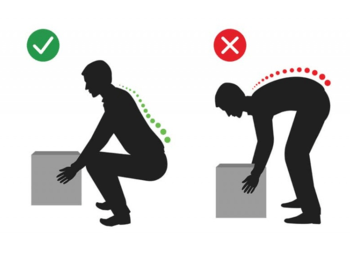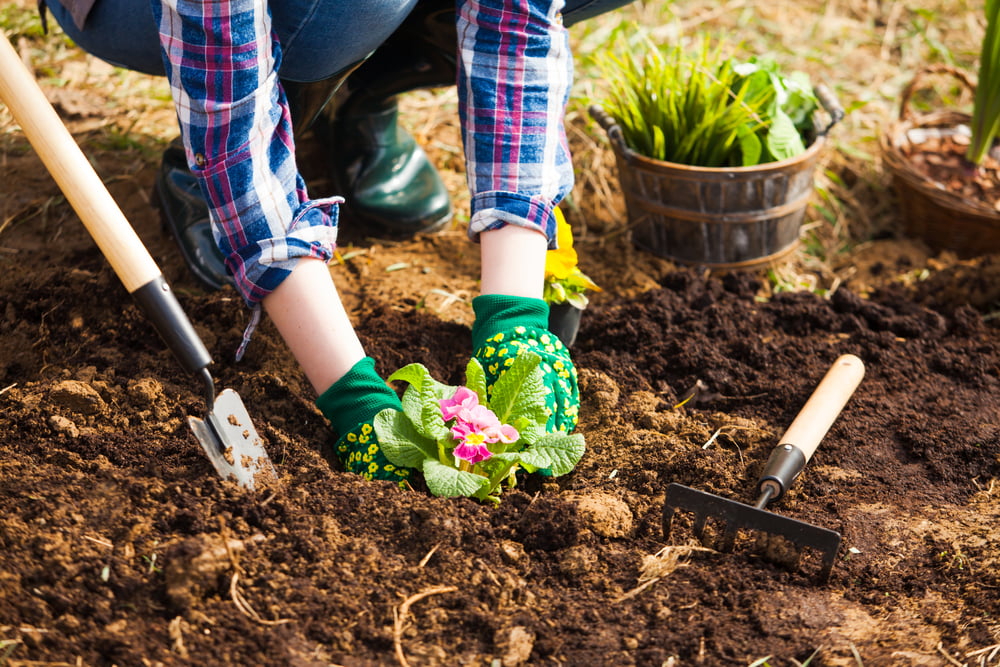Gardening shouldn’t hurt. However, it can be harmful to your body if not done with caution and concern. To prevent common gardening injuries, follow these tips & tricks:
Start with a warm-up:
March on the spot for 5 mins, walk to the mailbox, or start with easy raking to warm up your muscles. You should also perform a variety of stretches for your back, legs, neck, shoulders, hands and fingers to prevent injury.
See below examples:

Be mindful of your body mechanics and posture:
When lifting heavy objects, always bend at the hip and then knee (as though you are sitting back into a chair) thus using your legs. Ensure you keep your spine straight to prevent injury. Rounding or arching your low back will not only cause pain but likely lead to injury. Keep objects close to your centre (belly button) when lifting. A weight that is further from your centre of gravity is perceived as heavier to your spine. If needing to turn, do not twist your spine, instead take small steps to rotate your feet to have your trunk face another direction.

Don’t sit back on your knees:
Sitting back on your knees irritates the knee joints and requires you to use your hands and wrists to stabilize and bear your weight while shifting from kneeling to standing. Try using a garden stool or bench.
Position your body at the height of your work:
If you are working on the ground, kneel (use a knee pad to avoid compressive irritation of the knee). If you are potting, put your plants on a table. The ideal height of the table should be at the level of your hips when standing, instead you can sit to do this task and/or alternate between standing and sitting every 20-30mins.
Avoid one handed work:
Most repetitive strain injuries occur when one hand is doing most of the work. Use your other hand to grip a long handle or use both hands together to help dig.
Where gloves at all times:
This assists your grip to not overuse your muscles. It also prevents bacteria from entering your body through scrapes and cuts of the skin.
Use tools that work for you:
Keep tools close by to avoid reaching and twisting. Consider using a wheelbarrow to help with heavy objects. Use tools with ergonomic handles (see image A) or memory foam handles ( see image B)

Image A
Gardeners with a weak grip can use ergonomic gardening tools. The innovative and specifically angled handles encourage your hand to be held in a natural position and helps to reduce fatigue, while the non-slip grip makes them easy to hold.

Image B
Foam handles allow for a more comfortable and less effortful grip.
Take breaks:
Pace yourself! This is a necessity to avoid overstraining specific muscles.

